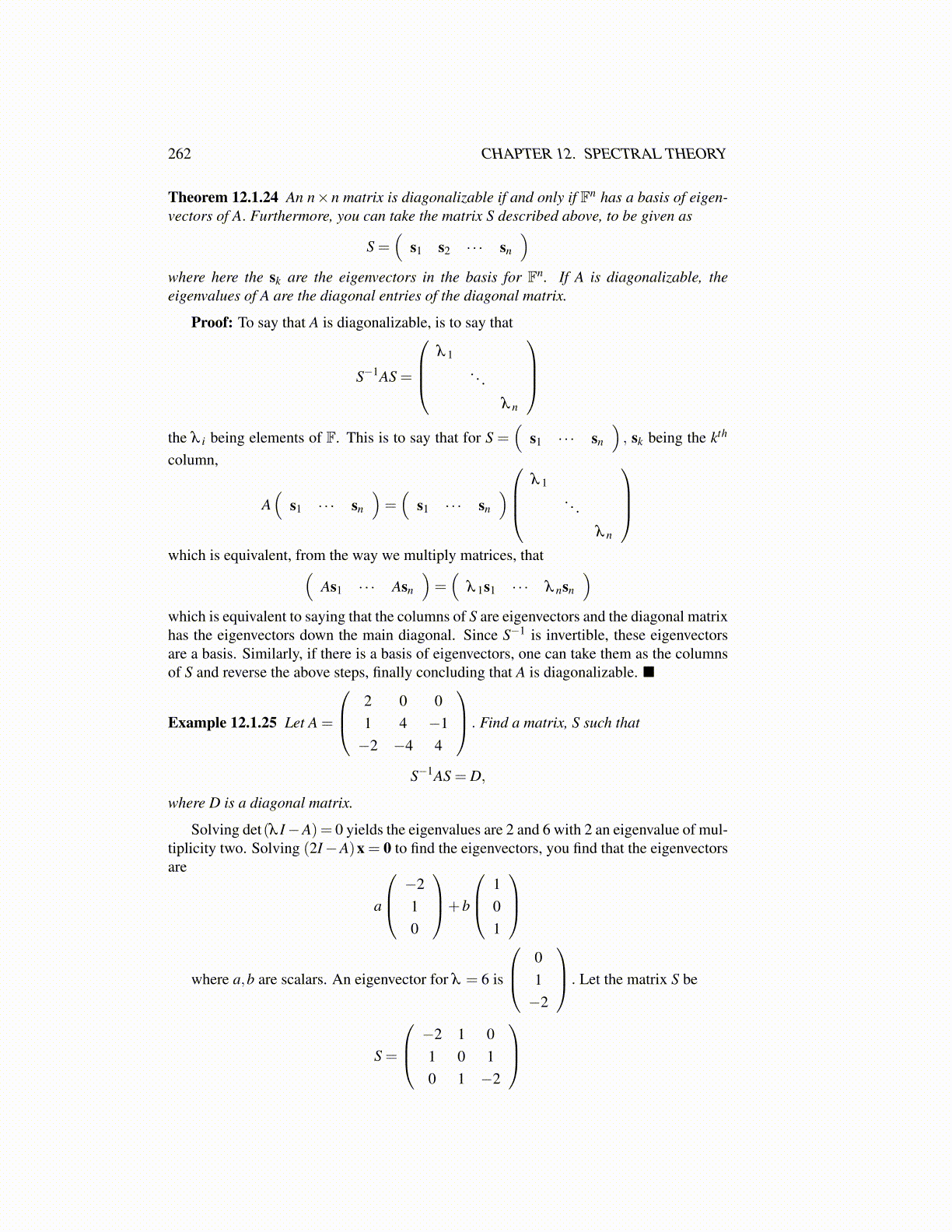
262 CHAPTER 12. SPECTRAL THEORY
Theorem 12.1.24 An n×n matrix is diagonalizable if and only if Fn has a basis of eigen-vectors of A. Furthermore, you can take the matrix S described above, to be given as
S =(
s1 s2 · · · sn
)where here the sk are the eigenvectors in the basis for Fn. If A is diagonalizable, theeigenvalues of A are the diagonal entries of the diagonal matrix.
Proof: To say that A is diagonalizable, is to say that
S−1AS =
λ 1
. . .
λ n
the λ i being elements of F. This is to say that for S =
(s1 · · · sn
), sk being the kth
column,
A(
s1 · · · sn
)=(
s1 · · · sn
)λ 1
. . .
λ n
which is equivalent, from the way we multiply matrices, that(
As1 · · · Asn
)=(
λ 1s1 · · · λ nsn
)which is equivalent to saying that the columns of S are eigenvectors and the diagonal matrixhas the eigenvectors down the main diagonal. Since S−1 is invertible, these eigenvectorsare a basis. Similarly, if there is a basis of eigenvectors, one can take them as the columnsof S and reverse the above steps, finally concluding that A is diagonalizable. ■
Example 12.1.25 Let A =
2 0 01 4 −1−2 −4 4
. Find a matrix, S such that
S−1AS = D,
where D is a diagonal matrix.
Solving det(λ I−A) = 0 yields the eigenvalues are 2 and 6 with 2 an eigenvalue of mul-tiplicity two. Solving (2I−A)x = 0 to find the eigenvectors, you find that the eigenvectorsare
a
−210
+b
101
where a,b are scalars. An eigenvector for λ = 6 is
01−2
. Let the matrix S be
S =
−2 1 01 0 10 1 −2